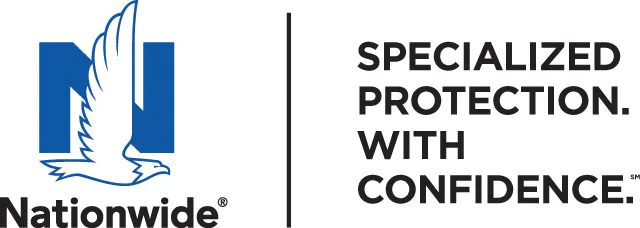Top employment practices liability trends and risk management considerations
Most business owners do everything they can to ensure successful operations and maintain positive relationships with their employees. Despite these efforts, however, employment practices liability (EPL) exposures persist. After all, employees or prospective employees could make allegations against businesses for various employment concerns, such as discrimination, wrongful termination, harassment and retaliation, among others. In fact, businesses are more likely to face EPL claims than experience fire-related property damages.1
To complicate matters further, EPL claims are becoming more common and costly. During the 2020 fiscal year, the U.S. Equal Employment Opportunity Commission addressed over 67,000 employment charges related to workplace discrimination alone — securing more than $439 million for impacted employees.2 Those numbers don’t even account for the majority of cases that are filed without government intervention. With this in mind, it’s clear that businesses can’t afford to ignore their EPL exposures. Here are some important EPL market trends and risk management considerations for businesses to keep in mind.
Key EPL trends
A wide range of market trends have contributed to EPL claims in recent years and influenced the market for employment practices liability insurance. Many of these emerging topics have the potential to drive lawsuits in the years to come. These trends include the following:
- Pandemic-related concerns — The ongoing COVID-19 pandemic has motivated many businesses to make significant workplace changes such as transitioning to remote operations, adjusting office layouts and conducting layoffs or furloughs. With these changes, EPL claims followed. Among the most common pandemic-related EPL claims are allegations regarding employee leave concerns and remote work capabilities, discrimination related to workplace adjustments or layoffs, and retaliation after an objection to unsafe work conditions.3 As the COVID-19 vaccine rollout continues and employees return to work, EPL claims may also arise from businesses implementing, following and enforcing vaccine mandates. Namely, businesses could face allegations for failing to accommodate employees who refuse to get vaccinated due to disabilities or religious beliefs.4
- Social movements — The #MeToo movement — an anti-sexual harassment campaign that began in 2006 and has gained increased social media attention since 2017 — empowered employees to call out instances of inappropriate workplace conduct, which largely contributed to a 50% rise in sexual harassment lawsuits against businesses over the past few years.5 Moving forward, racial justice campaigns may motivate employees to speak out against racial inequities on the job, potentially becoming a key factor in race-related workplace discrimination and harassment lawsuits.
- LGBTQ protections — In 2020, the U.S. Supreme Court affirmed that Title VII of the Civil Rights Act of 1964 protects gay and transgender employees from workplace discrimination and harassment based on sexual orientation, gender identity and gender expression.6 Although this is a relatively new development, the Supreme Court’s decision could lead to additional discrimination-based EPL claims in the coming years as LGBTQ employees feel encouraged to hold businesses accountable for any unfair treatment.
- Age discrimination issues — As a whole, the U.S. workforce is rapidly aging. In fact, the share of employees over the age of 55 is expected to rise to nearly 25% by 2024.7 Age discrimination can carry numerous consequences for businesses, including poor staff morale, a tarnished reputation and a rise in EPL claims.
- Marijuana legalization considerations — Currently, medical marijuana is legal in 36 states and recreational marijuana is legal in 19 states.8 In response, some states have enacted legislation that restricts a business’s ability to conduct drug tests for marijuana. Additionally, several state court cases have ruled in favor of the employee in recent employment lawsuits related to marijuana usage. That being said, businesses with outdated policies and procedures regarding marijuana testing and usage could encounter further EPL claims.
EPL risk management best practices
In light of these market trends, it’s important for business owners to take steps to minimize their EPL exposures and avoid potential claims. Specifically, businesses should follow these best practices9:
- Develop and distribute an employee handbook. This handbook should outline workplace guidelines related to key employment topics like discrimination, harassment and retaliation. In particular, the handbook should:
- Provide internal processes for making discrimination or harassment complaints — Having these internal procedures can help a business address employees’ concerns before they become costly claims. If an employee disregards these processes and immediately takes legal action, the business can defend itself by explaining that the employee failed to utilize internal channels to resolve the problem.
- Include an equal employment opportunity policy and an anti-retaliation provision — The latter element, which should specify that the business will not retaliate against employees who make employment charges, has become increasingly significant as retaliation claims continue to rise. In the 2020 fiscal year, such claims accounted for more than half (55.8%) of employment charges — up more than 10% from 2015.10
- Be audited on a regular basis — The handbook should be routinely reviewed and updated as needed to ensure it addresses the latest developments in employment law and can help adequately defend the business. Aside from conducting its own reviews, the business should also consider consulting a reputable law firm to periodically audit its employee handbook, among other employment policies and procedures.
- Establish a code of ethics policy. Such a policy should explain the business’s ethical standards and provide clear expectations for what employees may and may not do. Namely, the policy should prohibit employees from engaging in unethical behaviors on behalf of the business, such as giving kickbacks. Having this type of policy in place can show employees the business is committed to upholding ethical principles and help protect the business from facing punitive damages if it gets sued over the actions of an employee.
- Maintain job descriptions. The business should be sure to routinely assess workplace job descriptions to ensure they accurately convey the duties and responsibilities of each role. This will help employees better understand what is expected of them on the job and minimize potential misunderstandings. If any descriptions are inaccurate or missing important details, they should be updated as needed.
- Consider hiring a diversity and inclusion officer. Apart from having a dedicated human resources (HR) professional or department in place to assist with employment-related matters and ensure compliance with applicable employment regulations, the business should consider hiring a diversity and inclusion officer. Such an officer can take steps to help properly address the social movements discussed above, as well as establish initiatives to promote workplace diversity.
- Perform a pay equity audit. To prevent possible salary disparities — such as a gender pay gap — the business should conduct a pay equity audit. This entails reviewing the salaries of employees who perform comparable work or have similar responsibilities to ensure they receive equitable payment.11 The business should involve its HR professional or department, diversity and inclusion officer, financial experts and legal counsel within the audit process. If any salary disparities are detected, the business should take steps to remedy them.
- Keep detailed documentation. It’s vital for the business to maintain adequate documentation on all employees throughout their employment. This includes post-hire screenings (e.g., background checks), routine performance reviews, disciplinary actions and concrete termination steps. Employees with poor performance reviews should be placed on documented improvement plans before the business makes final termination decisions.
- Develop investigation protocols. In addition to keeping proper employee documentation, the business should also maintain records of any workplace complaints. These complaints should be thoroughly evaluated through standard investigation procedures, with all response measures or resolutions appropriately documented.
- Offer an employee hotline. In the event that employees want to make anonymous workplace complaints, there should be resources in place for them to do so. In particular, the business should provide an employee hotline, thus allowing employees to call and file complaints about employment issues while maintaining their privacy.
- Ensure adequate COVID-19 protection measures. Lastly, as the pandemic continues, it’s important for the business to adopt and maintain proper COVID-19 protection measures in the workplace. This may include procedures related to case reporting, mask wearing, social distancing and sanitizing. Requirements related to COVID-19 vaccinations and the protection of employees’ medical information should also be discussed. The business should consult legal counsel to ensure any COVID-19 protection measures are compliant with applicable federal, state and local laws, such as the New York Health and Essential Rights Act. These measures should all be clearly documented in writing.
Apart from implementing the aforementioned risk management practices, it’s critical for businesses to secure sufficient EPL coverage. Put simply, EPL insurance can protect businesses against the expenses that often accompany employment-related allegations.12 Although some small and medium-sized businesses falsely assume general liability policies will offer sufficient protection against EPL claims, these policies typically exclude losses stemming from employment charges. Especially considering that these charges can cost anywhere from $145,000 to $425,000 in settlement and defense costs, EPL coverage is a must for businesses of all sizes and sectors.13
To find EPL coverage tailored to their particular exposures, businesses should be sure to consult a trusted insurance professional, such as a broker. Businesses should work alongside their brokers to select an EPL insurance carrier that can meet their unique needs. This carrier should possess an experienced claims management team that’s prepared to address a wide range of sensitive EPL concerns. Such a carrier should be able to handle even the most complex EPL claims with ease while maintaining appropriate privacy levels for each party involved.
Overall, EPL exposures are a pressing concern for any business. Nevertheless, keeping an eye on the latest market trends, utilizing effective risk management techniques and purchasing proper coverage can help businesses keep their EPL exposures — and potential claims — under control.
Sources
-
1
“Facts and Figures: Employment Practices Liability Insurance,” static.nationwide.com/media/epli-facts-and-figures-accessible_tcm826-259060.pdf?r=9 (accessed Oct. 26, 2021).
-
2
“EEOC Releases Fiscal Year 2020 Enforcement and Litigation Data,” eeoc.gov/newsroom/eeoc-releases-fiscal-year-2020-enforcement-and-litigation-data (Feb. 26, 2021).
-
3
“COVID-19 pandemic creates heightened EPL exposure,” Bethan Moorcraft, insurancebusinessmag.com/us/news/professional-liability/covid19-pandemic-creates-heightened-epl-exposure-244582.aspx (Jan. 26, 2021).
-
4
“Employment Practices Insurance in Age of COVID, Vaccines, Shutdowns and Hard Market,” Andrea Wells, insurancejournal.com/news/national/2021/03/18/605981.htm (March 18, 2021).
-
5
“EEOC Releases Preliminary FY 2018 Sexual Harassment Data,” eeoc.gov/newsroom/eeoc-releases-preliminary-fy-2018-sexual-harassment-data (Oct. 4, 2018).
-
6
“Protections Against Employment Discrimination Based on Sexual Orientation or Gender Identity,” https://www.eeoc.gov/laws/guidance/protections-against-employment-discrimination-based-sexual-orientation-or-gender (accessed Oct. 26, 2021).
-
7
“Older workers: Labor force trends and career options,” Mitra Toossi and Elka Torpey, bls.gov/careeroutlook/2017/article/older-workers.htm (May 2017).
-
8
“2021 marijuana legalization update: Five things you need to know,” Laura Kersey, ncci.com/Articles/Pages/Insights-2021-Marijuana-Legalization-Update.aspx (June 24, 2021).
-
9
Employment practices liability insurance,” iii.org/article/employment-practices-liability-insurance (accessed (Oct. 25. 2021).
-
10
“Charge Statistics (Charges filed with EEOC) FY 1997 Through FY 2020,” eeoc.gov/statistics/charge-statistics-charges-filed-eeoc-fy-1997-through-fy-2020 (accessed Oct. 25, 2021).
-
11
“The Importance of Pay Equity,” Lisa Nagele-Piazza, shrm.org/hr-today/news/hr-magazine/spring2020/pages/importance-of-pay-equity.aspx (Feb. 21, 2020).
-
12
“Employment Practices Liability,” nationwide-mls.com/fs/products/commercial-liability/employment-practices-liability/ (accessed Oct. 26, 2021).
-
13
“EPLI Loss Data,” advisenltd.com/data/epli-loss-data/ (accessed Oct. 22, 2021).

